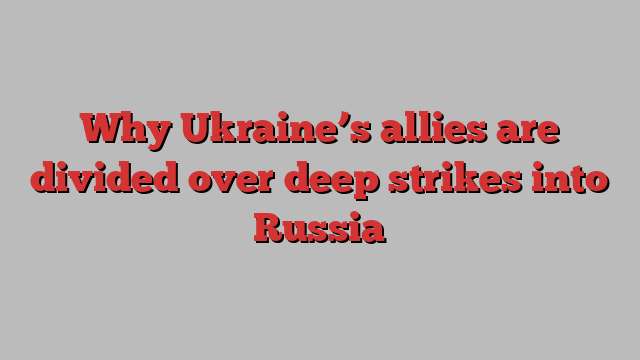
President Volodymyr Zelenskyy stepped up his appeals to allies to lift all their restrictions on the use of western weapons against targets on Russian territory after Moscow launched its biggest mass missile and drone strikes on Ukraine since February 2022.
Zelenskyy has made it Ukraine’s top diplomatic priority to persuade Washington and other western capitals to allow it to hit air bases and other military sites deep within Russia that are used to launch strikes against Ukraine.
“The US, UK, France and other partners have the power to help us stop terror,” the Ukrainian leader said.
The issue has divided Kyiv’s allies: the UK and France are eager to allow Ukraine to strike military targets deep within Russian territory while the US and Germany are opposed.
What capabilities is Zelenskyy referring to?
Ukraine has been handed missiles with ranges of up to 300km but told they cannot be used to hit targets in Russia.
These include the long-range version of the ground-launched Army Tactical Missile System or ATACM provided by the US earlier year and the UK-French-built Storm Shadow air-launched cruise missile, called the Scalp-EG by France, which Paris and London began supplying last year.
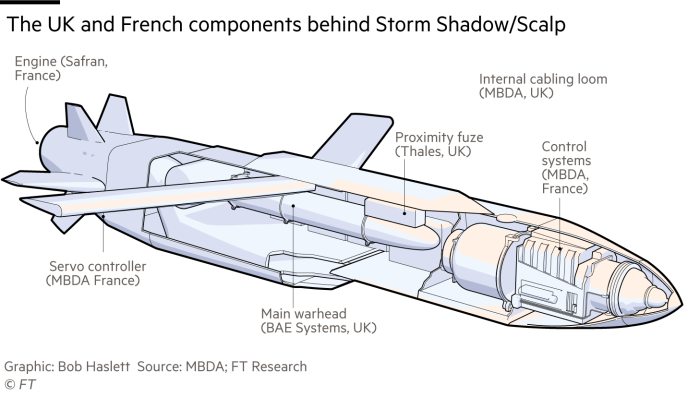
Kyiv wants the German-made Taurus, which has a range of 500km, twice that of the Storm Shadow, and a more powerful warhead. But Berlin has so far refused to supply them.
Ukraine also wants the right to use its newly arrived F-16 fighter jets — US-made but supplied by Denmark and the Netherlands and soon by Norway and Belgium — to bomb targets in Russia.
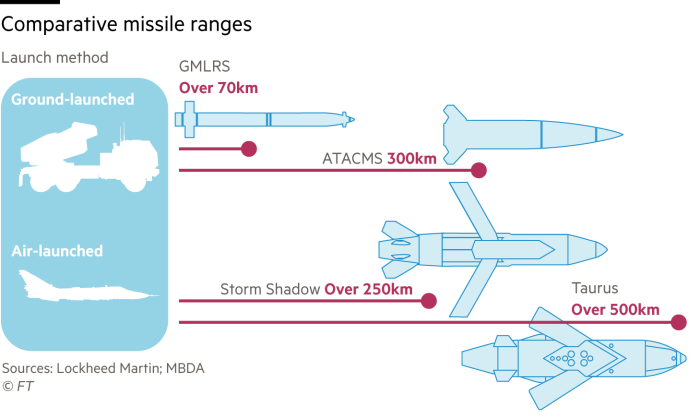
Why does Ukraine need these missiles to hit targets in Russia?
Zelenskyy said Ukraine needed to be able to strike deep across the border to “defend Ukraine from Russian missiles and guided aerial bombs, to prevent the transfer of Russian troops and to counter the occupier’s pressure on key front lines”.
That means hitting air bases, logistical nodes, command and control centres and troop formations.
Ukraine’s armed forces have had some notable successes striking Russian airfields, weapons stores, fuel depots and air defence complexes using home-built drones with ranges of up to 1,000km.
But western missiles are faster, more accurate, harder to intercept and can carry much larger payloads than drones.
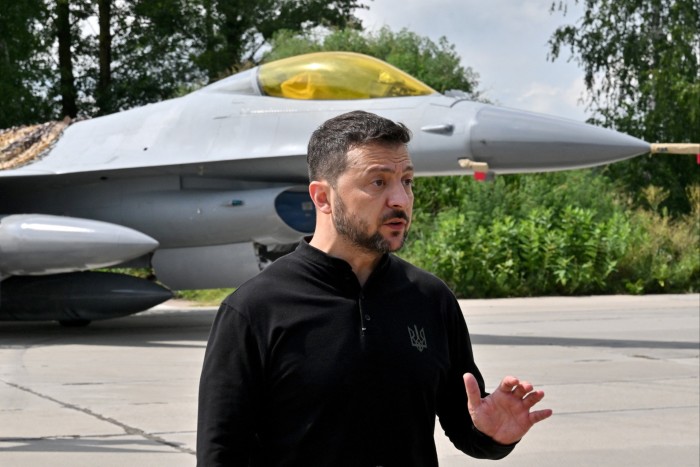
Why are Kyiv’s allies so reluctant?
In short, because the Biden administration and German Chancellor Olaf Scholz are worried about the risk of escalation if western weaponry hits Russia itself.
Ukraine and its more hawkish supporters say Washington and Berlin have repeatedly invoked the risk of provoking the Kremlin to justify not sending Ukraine precision missiles, tanks and F-16 fighter jets. But on each occasion when those weapons have eventually been supplied, Moscow’s threats have come to nothing.
Still, Washington persists. “Of course, we’re worried about escalation,” deputy pentagon spokeswoman Sabrina Singh said earlier this month. “So just because Russia hasn’t responded to something doesn’t mean that they can’t or won’t in the future.”
What about Britain and France?
London has been making the case to Washington for months that Ukraine should be able to fire UK Storm Shadows at targets inside Russia.
Well-placed figures have told the FT that the British government sent a request to both Washington and Paris earlier this summer to that effect.
The Biden administration has denied it is withholding permission. “The idea of a veto is too strong,” said one person familiar with the situation.
However, Downing Street admits that consensus among western allies is needed on such a contentious issue and that they should move in lockstep.
Another consideration is that Storm Shadow missiles may require access to US intelligence, surveillance and reconnaissance in areas where Russia is jamming GPS signals that the weapons use for targeting, according to the person familiar with the discussions.
French President Emmanuel Macron in May gave his support to Ukrainian strikes on Russian territory using French missiles. “We should allow [the Ukrainians] to neutralise the military sites . . . from where Ukraine is attacked,” he said. They should not be permitted to hit other targets or civilian facilities, he added.
Asked whether this was still the French position, an Elysée palace spokesperson referred the FT back to the president’s comments.
Will Kyiv be allowed to use long-range missiles in Russia?
Quite possibly. On previous occasions Britain and France have moved ahead when the US was still reticent. They were the first to pledge western tanks to Ukraine. And they supplied cruise missiles last year when Washington was still refusing to send long-range ATACMS.
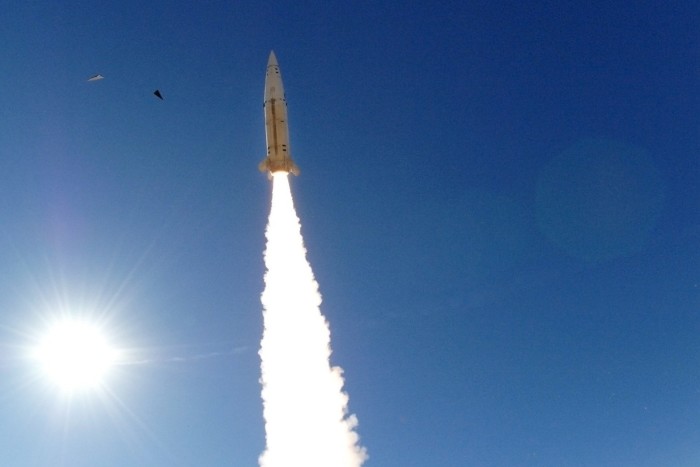
Britain unilaterally allowed Kyiv to use Storm Shadows to target Russian ships and naval facilities in occupied Crimea to devastating effect when the US still had misgivings about Ukrainian strikes on the peninsula. Grant Shapps, who was defence secretary until July, is understood to have pushed hard for Kyiv to be able to use the technology.
“The US didn’t authorise, or not authorise, the use on that occasion,” said one Whitehall figure.
US policy has also tended to evolve — albeit with a lag. It relented on tanks and more recently on long-range ATACMS. The latter were used earlier this year to strike Crimea. Berlin also relented on tanks, but is holding firm on Tauruses.
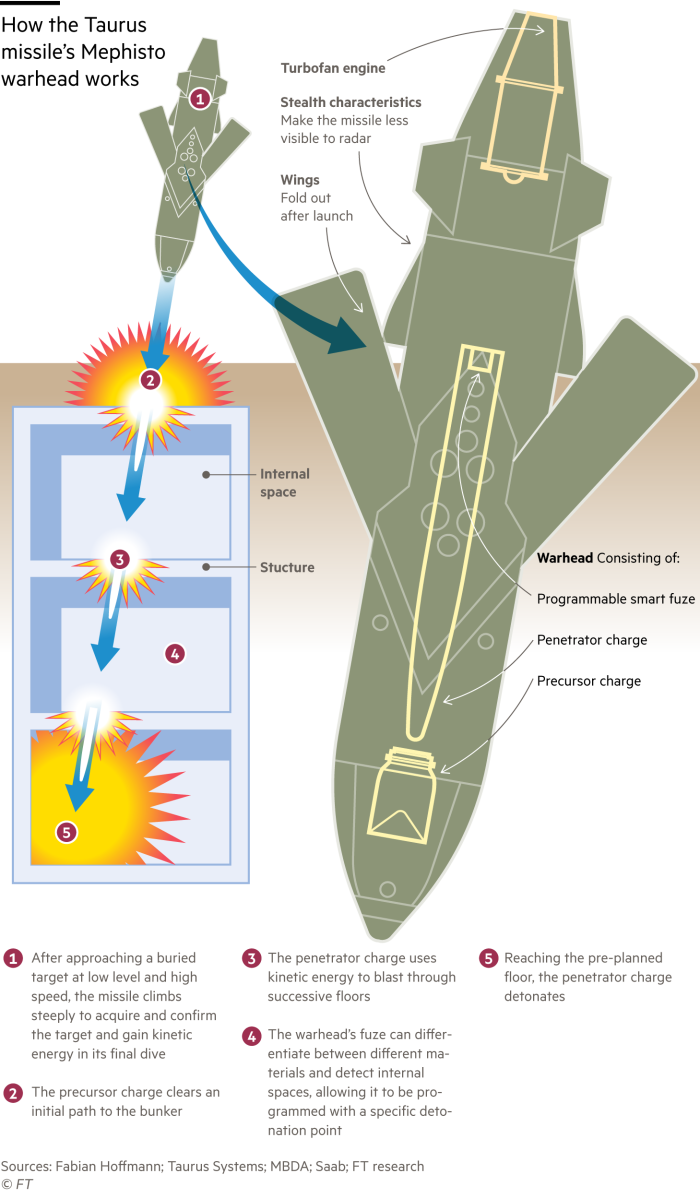
Washington in recent months has shifted on hitting targets in Russia close to the Ukrainian border. When Russian forces launched an offensive into Ukraine’s Kharkiv region, Kyiv complained that it was not allowed to use western kit to attack Russian troop formations, command and control centres or logistics just on the other side of the frontier. The US adjusted its policy, saying Ukraine could hit targets close to the border that were being used to support Russia’s offensive.
Ukraine has used US Himars precision-guide missiles, which have a typical range of around 40km, and western armour in its recent incursion into the Kursk region of western Russia. It also used German, American and UK-made fighting vehicles; both Berlin and Washington said the deployment of western kit was within the agreed terms.
Additional reporting by Adrienne Klasa in Paris
Illustrations by Ian Bott and Bob Haslett